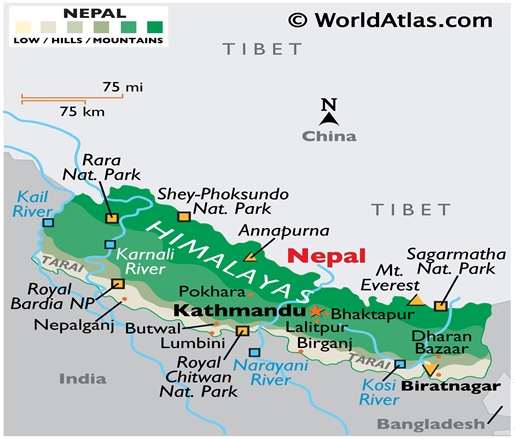The new government in India in June 2024 could consider offering Nepal a new and holistic development road map.
The India-Nepal Treaty of Peace and Friendship of 1950 forms the bedrock of the special relations that exist between India and Nepal.

|
Initiative |
About |
|
Swami Vivekananda Centre for Indian Culture at Kathmandu in 2007 |
To showcase the best of Indian culture |
|
Nepal-Bharat Library was founded in 1951 in Kathmandu |
It is regarded as the 1st foreign library in Nepal with the objective to enhance and strengthen cultural relations and information exchange between India and Nepal. |
|
B.P. Koirala India-Nepal Foundation |
It was set up in 1999 through an MoU signed between both countries. |
BBIN is Bangladesh, Bhutan, India and Nepal MVA for the regulation of passenger, personal and cargo vehicular traffic
References